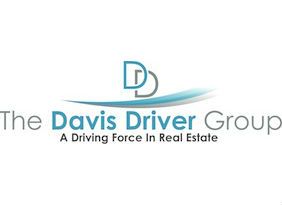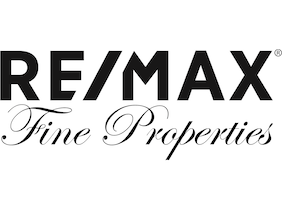Buying Decision Guide
Managing your lifestyle for “maximum return” by buying the “right” residential real estate is similar to managing money. Make the strategic decisions first; tactical ones second. Experts say long-term investing success is ninety percent dependent on the right strategic mix of investment types, such as stocks, bonds, real estate and commodities, rather than the tactical decisions of which stock or which bond.
Similarly, with respect to the decision of buying a home in the Phoenix/Scottsdale/Paradise Valley area, most of your future satisfaction will result from correctly making the strategic “place” decisions first. Once you have done that, the “tactical” decision of which specific home or homesite will come relatively easily. It rarely makes sense to focus on the home first, before figuring out the place decision. This guide will serve as your “roadmap” in this very important decision making process.
Stage One – Decide where you want to live – and why
1. Develop a vision – Imagine your most preferred future lifestyle and at least a general idea of the home(s) that will best support this lifestyle. Issues to consider include one home vs. multiple homes (if multiple homes, when would the Arizona home be used during the year?); minimum overall size of your Arizona home, free-standing vs. attached, number of bedrooms, amount of entertaining you expect to do, etc.; urban vs. non-urban location; leisure time activities; general ambiance; required conveniences or services; etc. Prioritize your motivations that appear to support this vision.
2. Set some ground rules – If financial matters are of particular importance, decide the amount of money you would comfortably invest to make your vision a reality. Decide if you have some flexibility in the amount, if it takes more to get what you want. Would you be willing to undertake a significant remodeling effort to bring an older home up to your current standards? Determine if it is feasible to make this investment now in order to start turning your vision into reality immediately. If not now, when will it be feasible?
3. Do we want to live in the United States? – Political and economic stability; proximity to business, family, friends; preferred climate; for residents of countries other than the United States, an opportunity for perhaps a completely different setting or investment diversification.
4. Do we want to live in the southwestern United States? – Drier climate and much less “buggy” than the Southeast (no need for screened-in porches); Mountain Time Zone; proximity to business, family, friends, or current primary residence; diverse geography; uncrowded, informal lifestyle; fabulous, varied scenery; suitable recreational options; attractive to friends and family who live in colder climates or less interesting parts of the country, access to wide open spaces and unique regional attractions.
5. Is Arizona the right southwestern state for us? – All of the above, plus state political climate and income and estate tax structure, general demographics and cultural attitudes, multi-cultural heritage and history going back more than a thousand years: excellent higher educational facilities, relatively low natural disaster risk (earthquake, flood, mudslide, wildfire, tornado, hurricane), more central location than the West coast, and an absolutely incredibly diverse collection of mountains, streams, lakes, deserts and canyons offering fishing, boating, hiking, hunting, skiing, exploring, sightseeing, solitude – you name it!
6. Do we want to live in the Phoenix/Scottsdale/Paradise Valley metropolitan area? – All of the above plus benefits of living in a major metropolitan area: frequency of commercial airline service (or access to private air services); shopping, cultural, educational, spiritual, entertainment and social opportunities; community services, schools, colleges and universities; civic organizations, medical support, cultural attractions, professional and major university spectator sports, horse shows, motor racing, horse racing, wildlife parks, Phoenix Open, Fiesta Bowl, Barrett Jackson Auto Auction and many more attractions.
7. Do we want to live in north Scottsdale instead of the Valley floor? – All of the above plus a range of cooler climate possibilities as you get higher (the highest community in north Scottsdale, Desert Mountain, averages only 12 – 15 days with a high temperature over 100 degrees; Sky Harbor Airport records around 89 such days per year, plus summer nights are as much as fifteen to twenty degrees cooler than the Valley floor, depending on how far north in Scottsdale you go; preference for a “small town” atmosphere in a High Sonoran Desert setting; lack of congestion; low crime rate; enjoyable wildlife; much better air quality; availability of preferred neighborhood type; stunning views; proximity to business, friends, family, educational and recreational needs; peace and quiet; better quality of life.
8. Do we want to live in a gated club community in north Scottsdale vs. other? – All of the above, plus privacy and even greater security; built-in social opportunities (which makes it easier to make friends and feel established much faster); access to desired highest-quality private entertaining and recreational facilities and services; enhanced property values due to architectural controls and other covenants and restrictions; status; even more peace and quiet.
9. Decide which north Scottsdale gated club community is best for you –
- Affordability (initial investment for real estate and, possibly, club membership; ongoing expenses such as Club dues, Homeowner Association fees, real estate taxes);
- Relative safety of investment (long-term community viability and likelihood of continued market success; risk of losing value due to some other less expensive and more attractive community being developed in a better location; size of the community and club, offering greater amenities and potential for lower costs due to economies of scale);
- Opportunity for increases in value due to supply and demand;
- Overall quality of development’s land planning, infrastructure, sensitivity to environment, architectural controls, Design Review process, clubhouses, restaurants, golf courses and other recreational opportunities, as evidenced by important awards from credible third-parties;
- Overall “menu” of club services and activities (dining, golf, tennis on grass, clay and hard-court surfaces; fitness, swimming, hiking, bocce, croquet, pickleball, mountain biking, spa services, concierge services, children’s programs, adult programs, social events); golf related issues (number and variety of courses, course conditioning, practice and teaching facilities, professional staff, pro shops, tee time accessibility, pace of play, ability to walk instead of take carts, level of competition within the Club, frequency and popularity of Club golf tournaments, limitations on women’s play – (none at Desert Mountain), guest fees and regulations);
- Club By-Laws and Membership Agreement (different memberships to meet different needs; exit strategy for getting out from under Club obligations);
- Physical attractiveness of setting (architectural variety; panoramic views; natural setting; mountains; vegetation; subtlety of land planning and design guidelines);
- Success of community so far (number of members, rise in value of membership and real estate, quantity and pace of new home construction and sales, homesite sales; overall sales trends);
- Overall “sense of community” (degree of build-out; variety of housing options; demographics, perception of being able to “fit in” and have fun);
- Proximity to services, entertainment and institutions (grocery and other shopping, churches, synagogues, schools, medical facilities, libraries, museums, movies, arenas, stadiums, etc.);
- Suitable variety of real estate purchase options (homes and homesites in various price ranges and sizes; ability to initially acquire homesite just to acquire membership, with no requirement to ever build;
- Presence of friends or family already in community.
Stage Two – Decide what you want in whichever golf community you select
10. Do we want to buy a home, or build one? – Need, desire/preference, capacity (mentally, financially, physically, time-wise) to design and build a custom home now or in foreseeable future. If custom building is desired route, figure out how much you can afford to spend on a homesite (we can help!).
11. If we want to be members of a private club, what membership do we want? – Full Golf,
Everything but Golf; or Golf only at Seven.
12. Decide on most appropriate type of property for your initial purchase – If looking for a homesite, in addition to price, consider need for particular views, solar exposure, terrain, size/shape of homesite and/or building envelope; privacy; and solitude. If looking for a home, custom vs. semi-custom; new or used; floor plan type; square footage; number of bedrooms; size of garage; pool/no pool; free standing vs. attached; at least partial maintenance by Homeowner’s Association or not; large homesite vs. small; golf course frontage or not; architectural style; interior colorization; desire/need to personally monitor construction; particular special features; level of finish; one level vs. multi-level; privacy; solitude; full or part-time use; right price, best value.
13. Decide on best area within your preferred North Scottsdale Golf Community – Location; views; proximity to Front Gate; proximity to community or Club facilities; availability (or lack thereof) of golf course frontage sites; size of homesites; degree of solitude; vegetation; altitude; degree of development; earliest possible home construction start date; occupancy date; price range; required terrain for certain type of home; monthly HOA fees.
14. Be ready, willing and able to proceed! – Have the funds and/or a mortgage available.
Stage Three – Take action, with confidence! – The research has been done; get what you want and start enjoying it!
If you have any questions as you go through this Buying Decision Guide checklist, please feel free to contact us!



